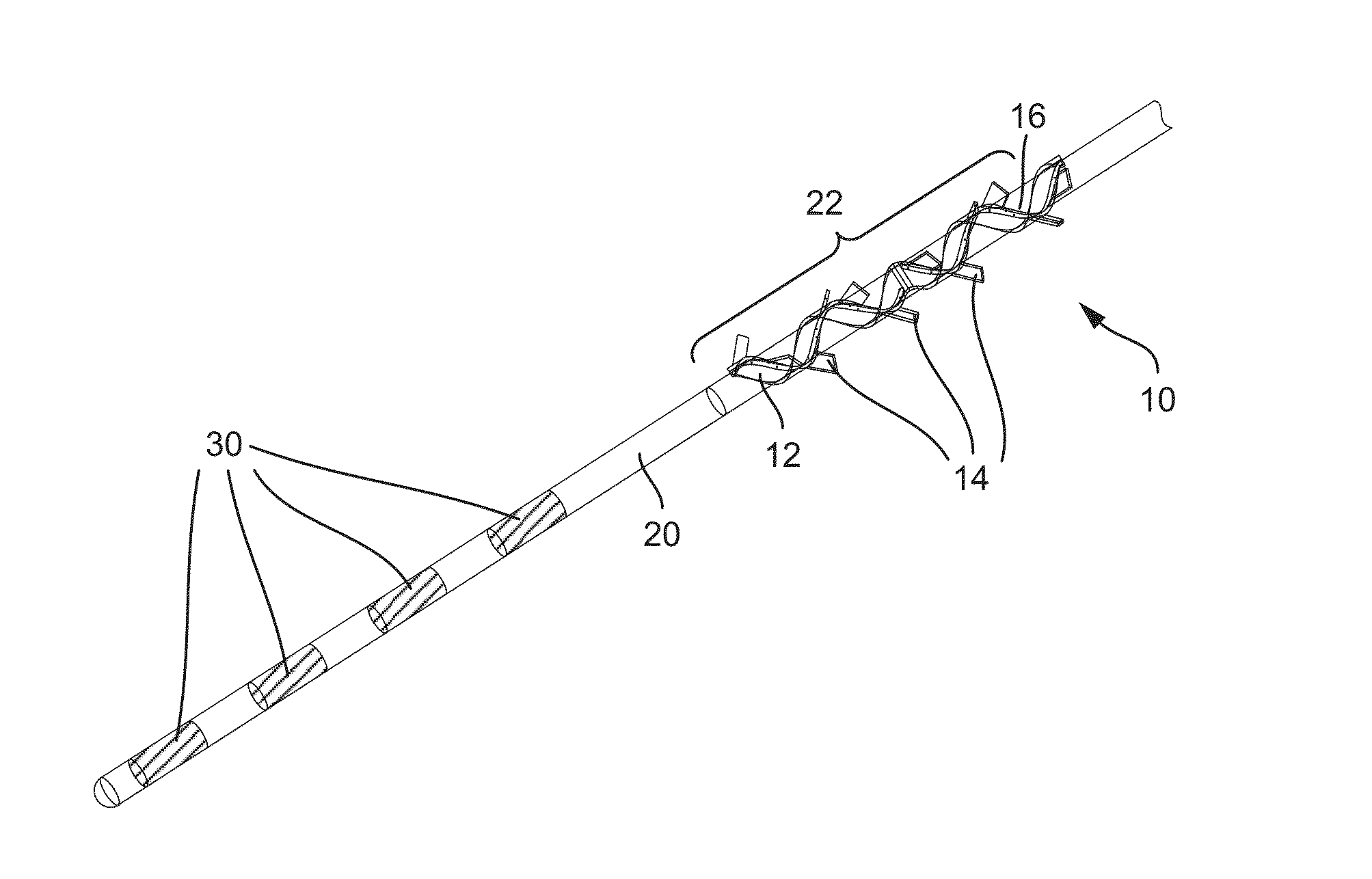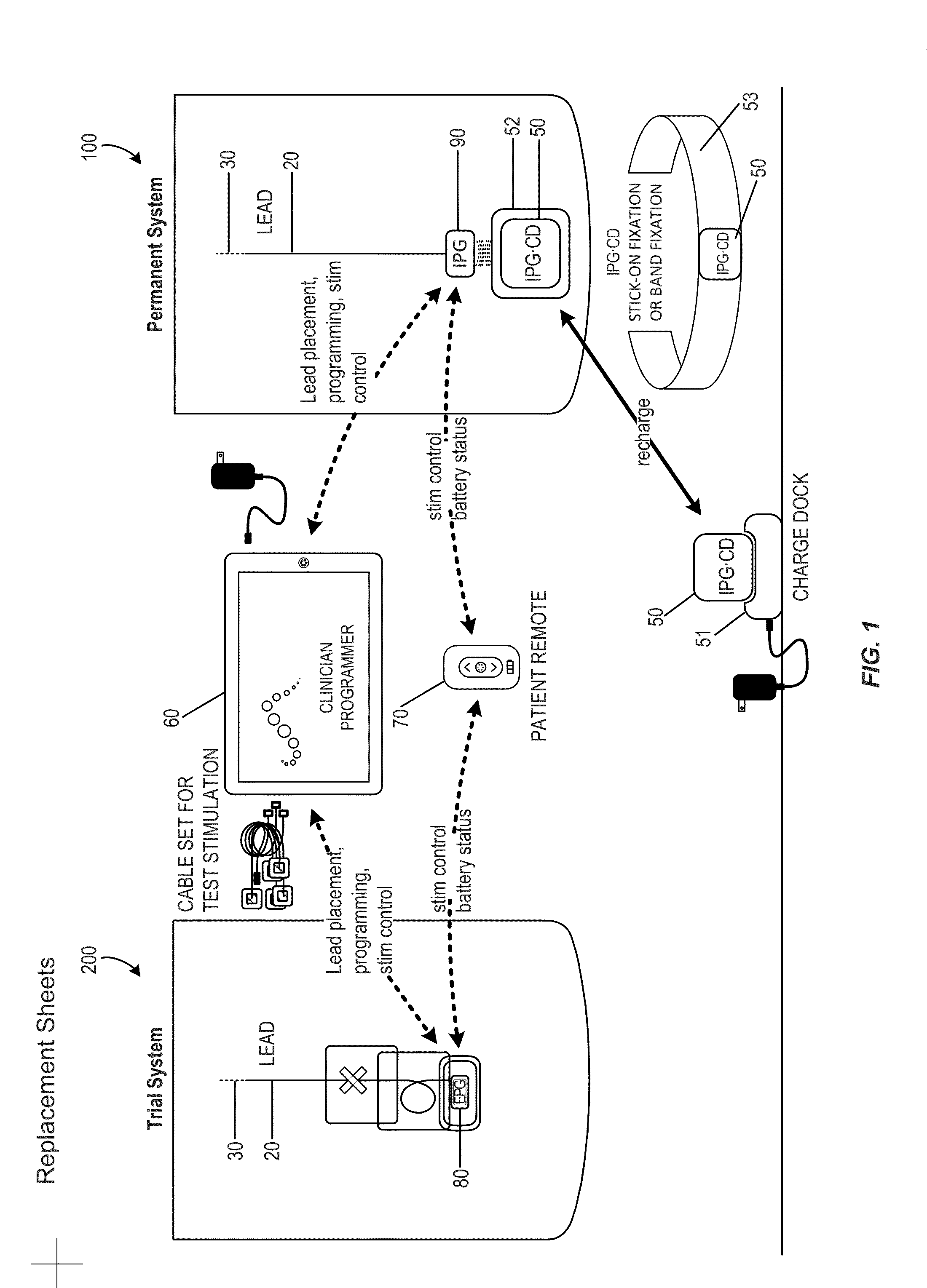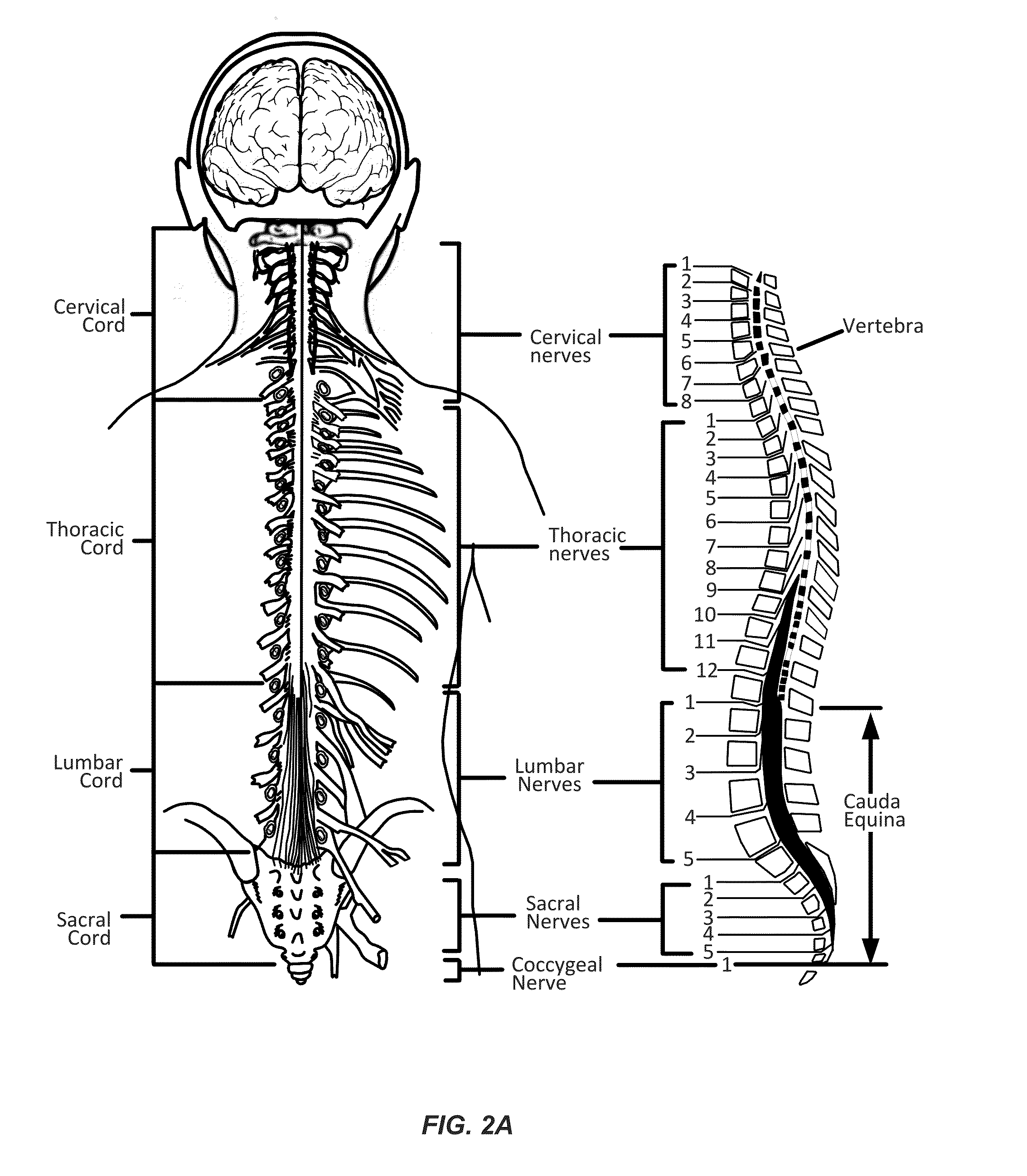Implantable Lead Affixation Structure for Nerve Stimulation to Alleviate Bladder Dysfunction and Other Indication
a lead affixation and nerve stimulation technology, applied in the field of neurostimulation treatment systems, can solve the problems of difficult to accurately predict or identify specific organs, difficult to determine the viability of treatment, and significant disadvantages of current stimulation electrode placement/implantation techniques and known treatment setting techniques, etc., and achieve the effect of further variability in the anchor structur
- Summary
- Abstract
- Description
- Claims
- Application Information
AI Technical Summary
Benefits of technology
Problems solved by technology
Method used
Image
Examples
Embodiment Construction
[0035]The present invention relates to neurostimulation treatment systems and associated devices, as well as methods of treatment, implantation / placement and configuration of such treatment systems. In particular embodiments, the invention relates to sacral nerve stimulation treatment systems configured to treat bladder dysfunctions, including overactive bladder (“OAB”), as well as fecal dysfunctions and relieve symptoms associated therewith. It will be appreciated however that the present invention may also be utilized for the treatment of pain or other indications, such as movement or affective disorders, as will be appreciated by one of skill in the art.
I. Neurostimulation Indications
[0036]Neurostimulation treatment systems, such as any of those described herein, can be used to treat a variety of ailments and associated symptoms, such as acute pain disorders, movement disorders, affective disorders, as well as bladder related dysfunction and bowel and fecal dysfunction. Examples ...
PUM
| Property | Measurement | Unit |
|---|---|---|
| length | aaaaa | aaaaa |
| length | aaaaa | aaaaa |
| distance | aaaaa | aaaaa |
Abstract
Description
Claims
Application Information
 Login to View More
Login to View More - R&D
- Intellectual Property
- Life Sciences
- Materials
- Tech Scout
- Unparalleled Data Quality
- Higher Quality Content
- 60% Fewer Hallucinations
Browse by: Latest US Patents, China's latest patents, Technical Efficacy Thesaurus, Application Domain, Technology Topic, Popular Technical Reports.
© 2025 PatSnap. All rights reserved.Legal|Privacy policy|Modern Slavery Act Transparency Statement|Sitemap|About US| Contact US: help@patsnap.com



